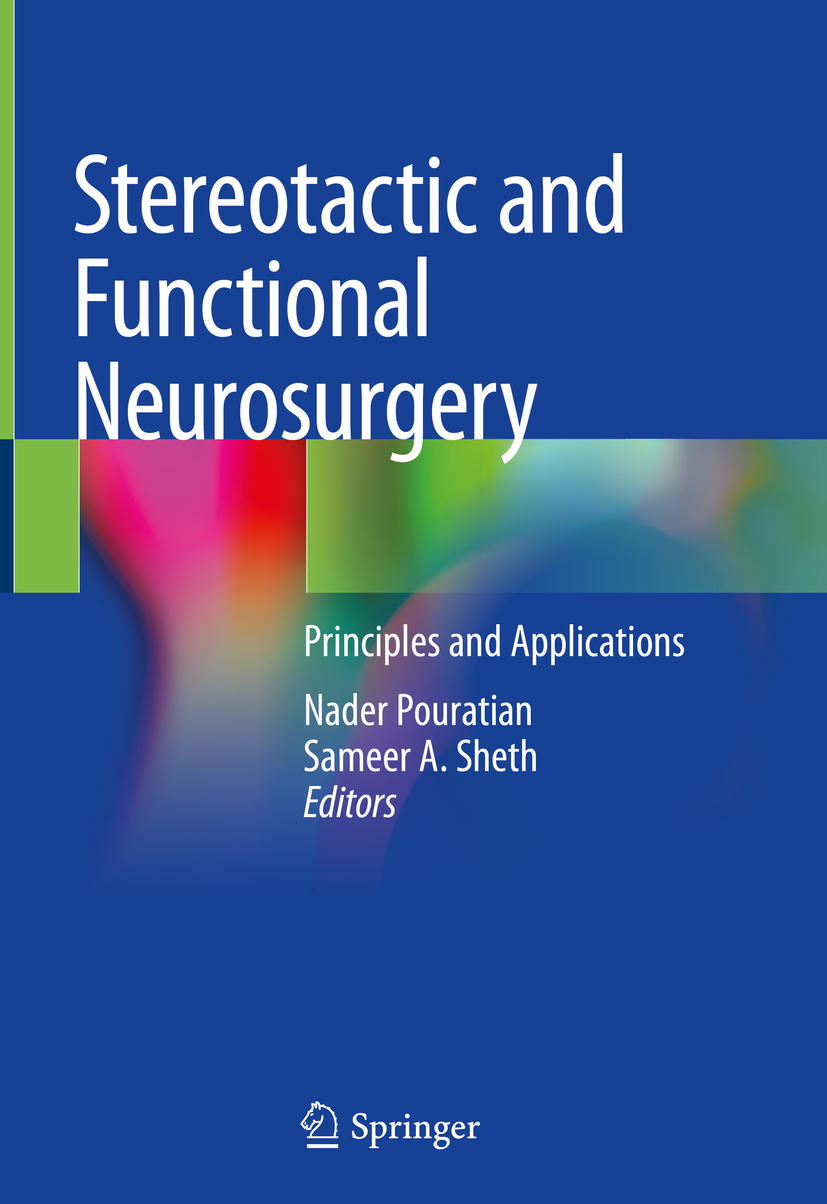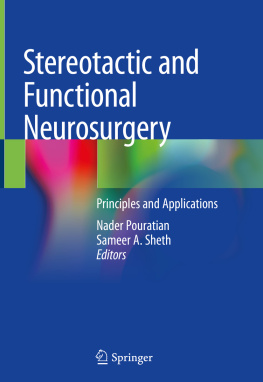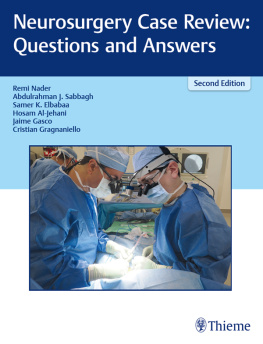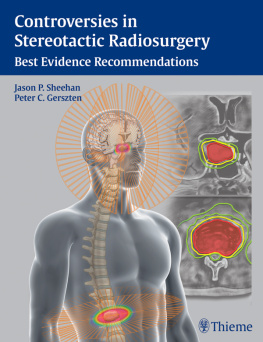Nader Pouratian - Stereotactic and Functional Neurosurgery: Principles and Applications
Here you can read online Nader Pouratian - Stereotactic and Functional Neurosurgery: Principles and Applications full text of the book (entire story) in english for free. Download pdf and epub, get meaning, cover and reviews about this ebook. year: 2020, publisher: Springer Nature, genre: Home and family. Description of the work, (preface) as well as reviews are available. Best literature library LitArk.com created for fans of good reading and offers a wide selection of genres:
Romance novel
Science fiction
Adventure
Detective
Science
History
Home and family
Prose
Art
Politics
Computer
Non-fiction
Religion
Business
Children
Humor
Choose a favorite category and find really read worthwhile books. Enjoy immersion in the world of imagination, feel the emotions of the characters or learn something new for yourself, make an fascinating discovery.
- Book:Stereotactic and Functional Neurosurgery: Principles and Applications
- Author:
- Publisher:Springer Nature
- Genre:
- Year:2020
- Rating:5 / 5
- Favourites:Add to favourites
- Your mark:
- 100
- 1
- 2
- 3
- 4
- 5
Stereotactic and Functional Neurosurgery: Principles and Applications: summary, description and annotation
We offer to read an annotation, description, summary or preface (depends on what the author of the book "Stereotactic and Functional Neurosurgery: Principles and Applications" wrote himself). If you haven't found the necessary information about the book — write in the comments, we will try to find it.
Nader Pouratian: author's other books
Who wrote Stereotactic and Functional Neurosurgery: Principles and Applications? Find out the surname, the name of the author of the book and a list of all author's works by series.
Stereotactic and Functional Neurosurgery: Principles and Applications — read online for free the complete book (whole text) full work
Below is the text of the book, divided by pages. System saving the place of the last page read, allows you to conveniently read the book "Stereotactic and Functional Neurosurgery: Principles and Applications" online for free, without having to search again every time where you left off. Put a bookmark, and you can go to the page where you finished reading at any time.
Font size:
Interval:
Bookmark:


This Springer imprint is published by the registered company Springer Nature Switzerland AG
The registered company address is: Gewerbestrasse 11, 6330 Cham, Switzerland
To my family Talia, Lylah, Noa, and Ari who encourage and support my drive to understand patients, therapies, and the brain, one patient at a time. Nader Pouratian
To my family, for always reminding me what is most important in life, and to my patients, for the privilege of being a part of theirs. Sameer A. Sheth
Stereotactic and functional neurosurgery is one of the most quickly evolving fields within neurosurgery. The field developed more than half a century ago as a means of performing targeted ablations for a relatively limited set of conditions. Over the decades, the field has broadened to include treatments for a much wider array of disorders of brain function using an assortment of delivery techniques. Today, the field continues to grow extremely rapidly, accumulating an ever-increasing armamentarium of therapeutic modalities for an ever-expanding number of disorders. This expansion has been fueled by an infusion of basic science research, in terms of both the diseases we seek to treat and the mechanisms of the therapies that we employ. As our understanding of the mechanistic basis of neurologic and psychiatric disorders continues to improve, our ability to precisely and effectively target nodes in well-defined dysfunctional networks has accelerated in tandem, benefiting an even wider array of patients. These expanding opportunities, indications, and treatment options necessitate close collaboration and mutual understanding of diseases and techniques with other clinical specialties, including Neurology, Pain Medicine, Psychiatry, Physiatry, Rehabilitation Medicine, and others. Our field will continue to expand yet further as we gain an even greater appreciation of brain-body interactions once considered beyond the scope of neurosurgical intervention, such as with the cardiovascular or gastrointestinal systems.
This book is thus targeted at the wide audience of influencers of this field. This audience certainly includes the modern practitioner of stereotactic and functional neurosurgery, who must be able to fluidly traverse decades worth of surgical techniques, a dynamic research landscape, and a multitude of fields of expertise. The target audience also includes those who are interested in advancing the field from other clinical and basic science perspectives, including neurologists, psychiatrists, neuroscientists, physiologists, and engineers. Part I of the book focuses on Achieving Stereotactic Precision, reviewing the techniques and principles used to deliver therapies in a targeted and precise manner. Part II is devoted to Defining Trajectories and Targets, discussing the various techniques across brain mapping modalities to define appropriate brain targets and to plan optimal approaches. This step is crucial, as the field increasingly recognizes that target identification and engagement define our success. Part III, The Biophysics of Functional Neurosurgical Therapy, provides the most up-to-date summary of the therapeutic mechanisms of the techniques employed in our field, evaluating how our interventions interact with neural tissue, from neurons to networks. This understanding is critical and is also the most quickly evolving aspect of the field. Part IV (Diseases and Targets) builds on the principles delivered in the prior parts, providing a deep dive into a detailed treatment of the most common disorders using the different techniques available in the field, to bring the reader up to speed on each in turn. The final part (Part V: The Future of Functional Neurosurgery) provides a glimpse of future areas of research and growth within this field.
Our aim with this book is to provide a thorough introduction to stereotactic and functional neurosurgery for the new practitioner while also providing a useful reference for the experienced practitioner seeking to expand into new avenues within the field. Equally important, we invite the multidisciplinary field of clinical and basic neurosciences to use this book to gain a better understanding of the principles and applications of stereotactic and functional neurosurgery to identify opportunities for even further advancement in this exciting and continually evolving field.
Font size:
Interval:
Bookmark:
Similar books «Stereotactic and Functional Neurosurgery: Principles and Applications»
Look at similar books to Stereotactic and Functional Neurosurgery: Principles and Applications. We have selected literature similar in name and meaning in the hope of providing readers with more options to find new, interesting, not yet read works.
Discussion, reviews of the book Stereotactic and Functional Neurosurgery: Principles and Applications and just readers' own opinions. Leave your comments, write what you think about the work, its meaning or the main characters. Specify what exactly you liked and what you didn't like, and why you think so.











